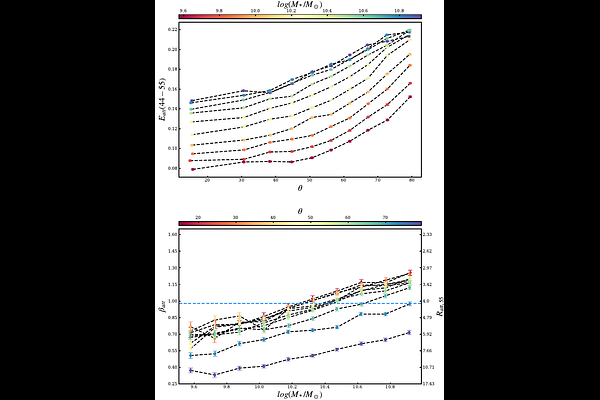Non-Parametric Attenuation Curves in Local Star-Forming Galaxies: Geometry Effect, Dust Evolution, and ISS

Non-Parametric Attenuation Curves in Local Star-Forming Galaxies: Geometry Effect, Dust Evolution, and ISS
Jiafeng Lu, Xi Kang, Shiyin Shen, Qi Zeng, Shuai Feng
AbstractWe introduce a non-parametric approach, the Stellar Population Synthesis with Equivalent Widths (SEW) method, to reconstruct spectral-resolution wavelength-dependent attenuation curves for 169,568 star-forming galaxies from the SDSS DR7. Composite attenuation curves, stacked across stellar mass and inclination bins, reveal systematic trends: higher stellar mass correlates with steeper attenuation slopes (lower $R_V$), while edge-on galaxies exhibit flatter curves due to geometric saturation effects. Radiative transfer modelling under a uniform dust-star mixture confirms that the observed slope evolution with inclination comes from the galaxy geometry; the slope evolution with stellar mass arises from intrinsic dust property variations, linked to mass-dependent grain processing mechanisms. Additionally, intermediate-scale structures (ISS) at 4870, 6370, and 7690 \r{A} are tentatively detected. These findings underscore the interplay between dust geometry, grain evolution, and galactic environment, offering new insights into dust lifecycle models.